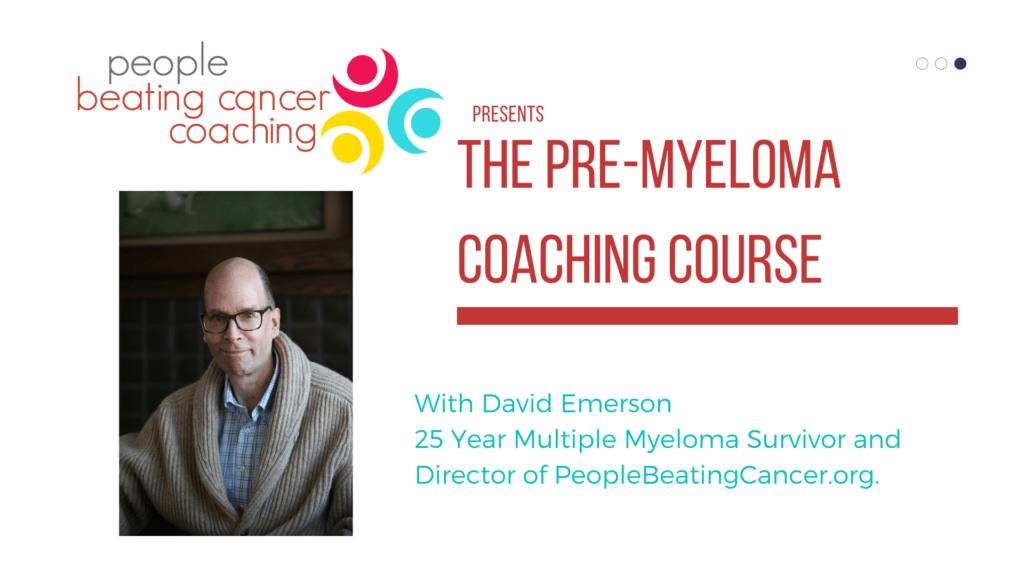
Diagnosed with SMM, SPB, or MGUS?
Learn how you can stall the development of full-blown Multiple Myeloma with evidence-based nutritional and supplementation therapies.
Click the orange button to the right to learn more.
- You are here:
- Home »
- Blog »
- Pre-Myeloma »
- Smoldering Myeloma- Raw Food Diet?
Smoldering Myeloma- Raw Food Diet?

Dear David- I have was diagnosed with Smoldering Myeloma (SMM). I did not want chemo, or radiation, or a bone marrow transplant. I started eating a mostly raw food diet instead.
I had a couple blood tests since and my MM was being controlled with my counts slowly heading in the right direction. The oncologist was encouraged by my blood counts and said he wanted to see me again in 6 months.
Then I had a very stressful three months with lots of problems in which I did not stick as strictly to a raw food diet as I did previously. I also injured my back at work, which was very painful and added to my stress. It was taking weeks to heal.
This injury made me consult my doctor. That led to X-rays, and another blood test. My numbers were much worse than in the previous two blood tests.
Some of my numbers, which were already higher than normal, actually doubled! I have an appointment to meet with my oncologist in a few days.
I expect him to tell me I must now get chemo, and other traditional therapies, or I will die.
I wonder if it is too late for me to turn things around holistically if I am willing to be more stringent with a natural cancer-fighting raw food diet? NDSMM patient
Dear NDSMM patient-
- exercise,
- sleep,
- good nutrition (lots of fruits and veggies),
- no tobacco,
- little alcohol, and
- specific nutritional supplementation
- MM Survivor
- MM Cancer Coach
- Director PeopleBeatingCancer
Cancer prehabilitation—a short review
“Cancer prehabilitation uses the pretreatment time period to prevent a treatment-related functional decline and its subsequent consequences, and therefore occurs between the time of cancer diagnosis and the beginning of acute cancer treatment.
This intervention has been shown to improve
- functional status,
- physical and psychological health outcomes and
- decrease overall health care costs-
Currently there are several unimodal and one multimodal cancer prehabilitation regimens. Unimodal cancer prehabilitation includes exercise only, and multimodal cancer prehabilitation regimens are combinations of different interventions such as exercise, patient information and education, nutrition, psychologic counseling such as psycho-oncology, smoking cessation and reduction of alcohol consumption.
Both approaches have the goal to improve physical capacity and mental health and to enable cancer patients to cope with the upcoming stress of the specific cancer-related treatment they need.
Furthermore, cancer prehabilitation can support cancer patients to better participate in cancer rehabilitation after cancer treatment and maintain their ability to engage in premorbid activities. A growing body of scientific evidence confirms the importance of cancer prehabilitation…”
Dietary intake is associated with risk of multiple myeloma and its precursor disease
“To conclude, in this population-based screening study we found that high intake of fruit during the adolescent period and whole wheat bread during the midlife period may reduce the risk of MGUS later in life and that high fruit intake in late life may reduce the risk of progressing from MGUS/LC-MGUS to MM. Our findings suggest that food intake might alter the risk of developing MGUS and progressing to MM…”


